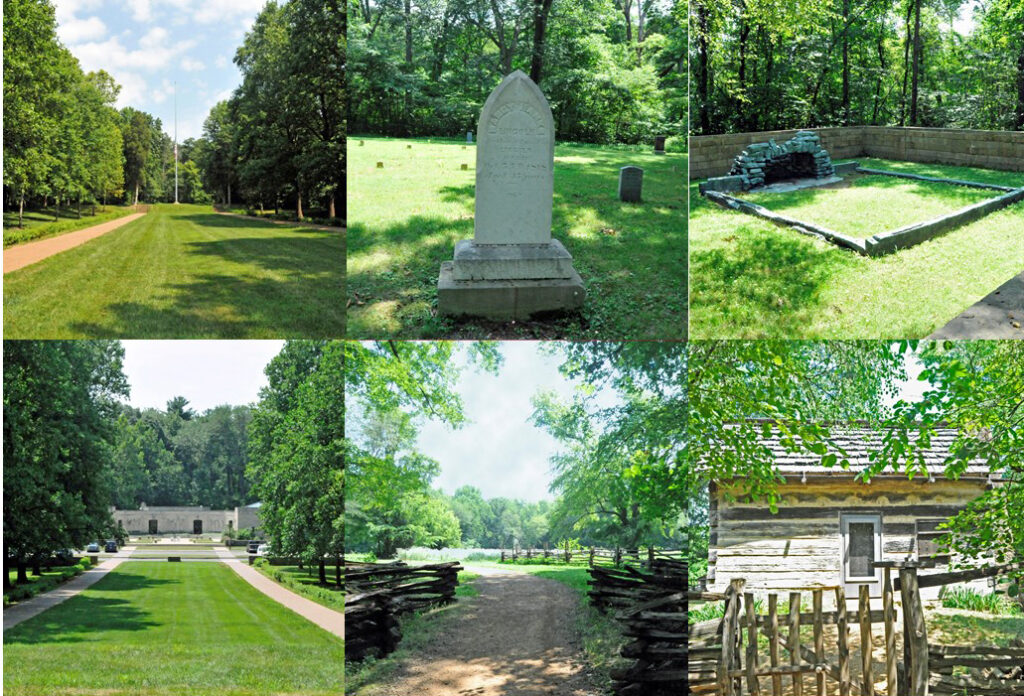The Lincoln Boyhood National Memorial, about 100 miles south of Indianapolis, recognizes the 14 formative years Abraham Lincoln spent in Indiana.
Abraham Lincoln was born in 1809 near Hodgenville, Kentucky, to Thomas and Nancy Hanks Lincoln. In 1816, after losing three farms in title disputes, Thomas moved his family to Indiana because of its reliable land surveys and slavery ban. He purchased 160 wooded acres from the federal government in what is now Spencer County for $320, payable over time. He built a one-room log cabin and began clearing about 80 acres. When Nancy Lincoln died of milk sickness in 1818, Thomas buried her on a hilltop 1500 feet from the cabin, establishing a small private cemetery. In 1827, Thomas Lincoln relinquished his claim to 80 acres and received clear title to the remainder. In 1829, he began building a new log home, but moved his family, including his second wife and stepchildren, to Illinois before completing it.
In 1879, with increased interest in all things Lincoln, Peter Studebaker of South Bend erected a head stone over the probable location of Nancy Lincoln’s grave. In 1917, archeologists discovered hearthstones from the unfinished 1829 house. In 1925, Indiana acquired 60 acres, including the cemetery and cabin site, and opened the Nancy Hanks Lincoln Memorial, with an allée designed by Frederick Law Olmstead leading to the cemetery. In 1934, a mile-long Trail of Twelve Stones was added, marking significant events in Abraham Lincoln’s life. A bronze monument symbolizing a cabin foundation and fireplace was added. In 1943, Indiana completed a two-wing limestone memorial building, honoring Abraham and Nancy Hanks Lincoln, at the south end of the allée. The site, named a National Historic Landmark in 1960, now includes a reconstructed 1820s farm, with staff members in period dress answering questions about the time the Lincolns lived there.

Comments are closed.